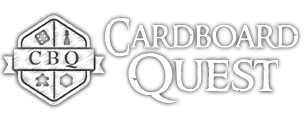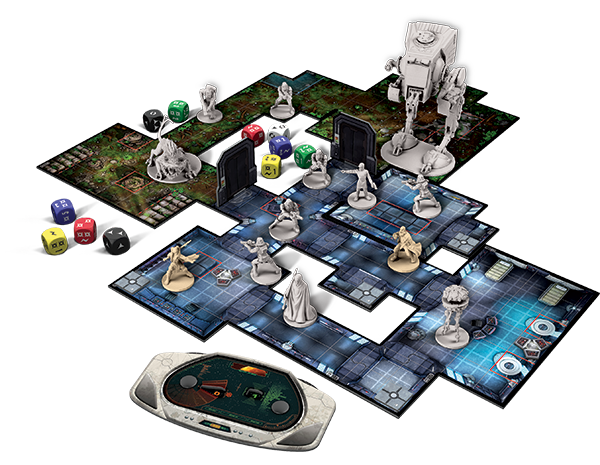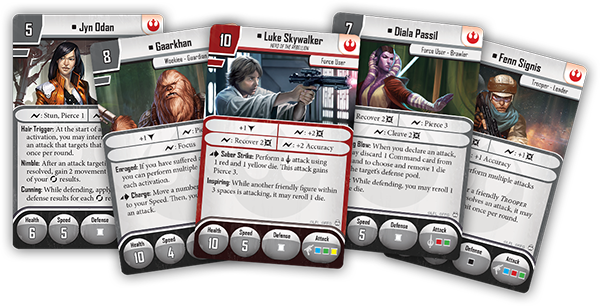Criterial Default – Hype is the Path to the Dark Side
Even before I’d taken the plunge into the world of boardgaming, I can still vividly recall how these giant boxes of cardboard and plastic would whisper to me from the store aisles, willing me to arouse from my walking slumber. And in particular, it was the coffin boxes of Descent that whispered the loudest. But lacking capital of both the financial and friends variety, those siren-like calls went unanswered.
And then 2012 barged into the room, like that rambunctious flatmate who’s always bringing some new friend home. Only this time, that friend was Descent 2nd Edition and boy did sparks fly. I’m somewhat ashamed to admit that the dust is probably thick on that box on my shelf these days, but I’m grateful to 2nd Edition for many things, including the group of friends I now game every Thursday with.
Why the unnecessarily intimate insight into my personal history? Simply to paint a portrait of a gamer who very much enjoys the Descent system, and one you might think would not have hesitated to pick up Imperial Assault the second it hit local shores. But I didn’t. Why? I’m still not really sure to be honest. Partly perhaps because I didn’t want to commit to campaign play on a regular basis because I had too many other titles to play, partly because I was concerned about early impressions, partly perhaps because I felt Descent 2nd Edition still had so much game left in the box.
Imperial Assault dropped off my radar for a while after that, I’d see the occasional expansion announcement or the game set up at a local store, but the dreaded FOMO seemed unconcerned with me. Until Jason snagged a copy recently, and when the stars finally aligned and CBQ could all sit down around a table together, I found myself surprisingly quite excited to finally take the plunge. Cautious still, but excited. Jason will get down to the matter of a review once we’ve played through most of a campaign, but I thought I’d get some thoughts down on what that first experience was like. All too often the perspective on bigger titles tends to be through a lens of massive hype, only to be tainted by the disappointment of reality, and I do wonder whether my experience would have been the same had I boarded the train when Imperial Assault launched in 2014.
Hype is a dangerous commodity, much like meeting someone who’s been a little too heavy handed with the Axe deodorant. They’re terribly good looking in all the photos, but meet in person and it matters little how great their personality is, your only thought is to escape the oppressive fragrance. Hype is the last remnants of dishwashing liquid in your coffee cup, ruining your imported Kopi Iuwak. But in my experience, hype is can also act as a deterrent – I’d rather not play a massively hyped title just as it’s been released in order to avoid what is often pseudo-disappointment. The only problem with that approach is the deluge of new game releases. Decide to delay playing a title and it’s not long before it feels as if you might never end up getting to it.
Kickstarter hasn’t exactly helped my predicament – the entire period of funding is like a focused blast of the Hype-Ray, the constant smell of warm chocolate brownies emanating from a kitchen you can never reach. And it’s hard, it’s so very hard to avoid the tractor beam of Kickstarter exclusives and Early Bird pledge levels. More often that not, Time is the great leveler and many titles that suffered under the yoke of unrealistic expectation weather the storm and reach the far shore of critical acclaim mostly intact.
For every action there is an equal and opposite reaction, and this is true on the seas of boardgaming for hype is often greeted by a wave backlash that has left more than a few wrecks on the bottom of the ocean. In fairness, sometimes the backlash is well founded and of course it always remains very much a subjective opinion, but I think for example of Abyss whose artwork engendered a level of ill-conceived hype. The strength of the game’s design has increased the game’s popularity over the years, but that disconnect between the gorgeous components and a style of play that zigged instead of zagged no doubt impacted upon its initial reception.
Where am I going with this? Well let’s just say that anyone reading the early reports on Imperial Assault from a position of neutrality would either be under the impression it was the greatest dungeon-crawler of all time, or that it was a cynical retheming of a beloved franchise. And as is so often the case, playing it for the first time two years later suggests the truth as being somewhere in the middle.
Whilst there are a number of changes between Imperial and Descent, there’s one that is the most critical. Because if one difference can change the entire experience so drastically, I’d say the argument from cynicism is baseless. That change seems such a simple one – rather than all the heroes activating before the overlord, turns are alternated. And boy, what a change for the better that is. Turns flow with far more dynamism, an elegant dance of parry, attack and riposte rather than two neanderthals wailing on each other with big clubs. The threat spawning mechanic is also a drastic improvement, with enemy units appearing in a manner that feels organic and less ‘oh a massive Ettin just appeared for no particular reason’.
It would be easy to label Imperial Assault as Descent 3rd Edition – the improvement of rules such as line-of-sight, what happens to characters when they get ‘knocked out’, how attributes work – but the overall sense I had walking away from our first campaign foray, was how well theme has been integrated with mechanic. I love Descent, but it’s far from a unique or compelling fantasy world. You can give a sword a fancy name but it remains just a sword and a barbarian will always be a barbarian. And sure, the archetypal classes are still identifiable, but the heroes just felt far more distinct from each other, the items and equipment felt grounded and real; Imperial Assault doesn’t feel like the child of Descent, but rather the parent.
I felt a pang of regret once our session ended, as a memory of a time when I could have picked up the game at less than half its current price came flooding back. Part of the reason I didn’t give in back then was just how fresh many of the early criticisms were in my mind. So in a sense, I’m glad that it’s taken me this long. Perhaps it would have been love at first play and that heady mixture of hype and hearsay would have failed to cloud my judgement. And perhaps it may have proven too rich an ambrosia for my weakened constitution, rendering me drunk and disappointed.
The point is, our eagerness to stay abreast of every tiny development in a game’s lifecycle isn’t inherently a bad thing. Excitement is great, optimism is grand and personally I’d rather be stricken with constant enthusiasm rather than mild pessimism. But don’t underestimate the strength of the hype side of the force, many a great game has fallen victim to its allure.
-
Sky Noh







